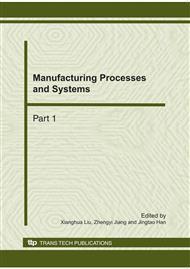p.979
p.983
p.987
p.994
p.998
p.1003
p.1007
p.1011
p.1016
Synthesis and Magnetic Properties of CoFe2O4 Nano-Particles
Abstract:
Spinel CoFe2O4 nano-particles were synthesized by hydrothermal traditionally and Ethylene Glycol (EG) assisted hydrothermal process originally. The effects of reaction temperatures from 140°C to 200°C, different OH- provider and EG/water ratio on the nano-particles’ structure, morphology and magnetic properties of composition were studied by X-ray diffractometer (XRD), transmission electron microscopy (TEM) and vibrating sample magnetometer (VSM). The possible mechanism for the effects on the properties was also discussed in details. The results showed that NaAC as OH- provider and higher EG/water ratio in solvent were benefit for getting smaller CoFe2O4 nano-particles. And existence of EG is also important to remove the α-Fe2O3 phase.
Info:
Periodical:
Pages:
998-1002
Citation:
Online since:
October 2010
Authors:
Price:
Сopyright:
© 2011 Trans Tech Publications Ltd. All Rights Reserved
Share:
Citation:


